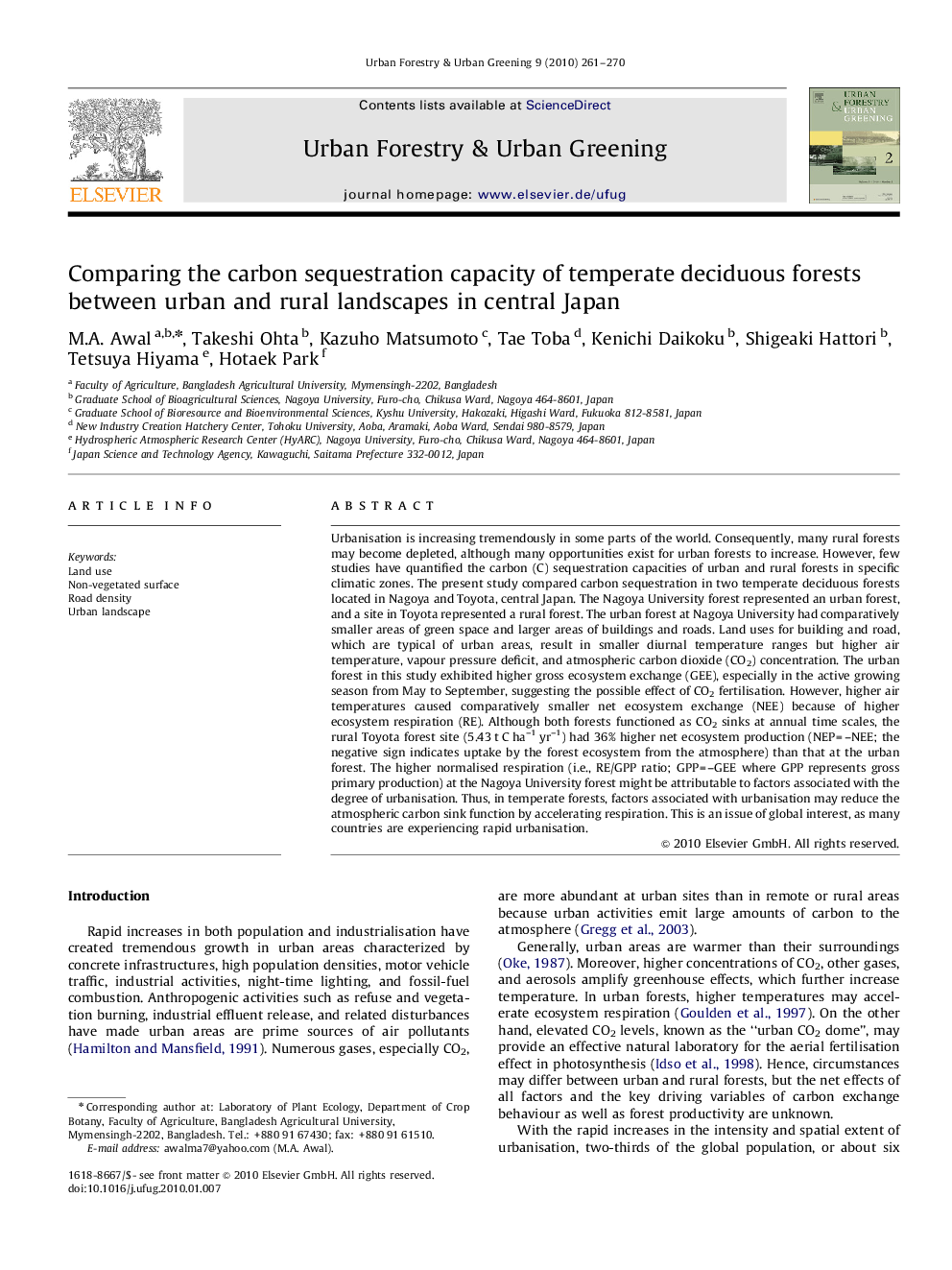| کد مقاله | کد نشریه | سال انتشار | مقاله انگلیسی | نسخه تمام متن |
|---|---|---|---|---|
| 94313 | 160271 | 2010 | 10 صفحه PDF | دانلود رایگان |

Urbanisation is increasing tremendously in some parts of the world. Consequently, many rural forests may become depleted, although many opportunities exist for urban forests to increase. However, few studies have quantified the carbon (C) sequestration capacities of urban and rural forests in specific climatic zones. The present study compared carbon sequestration in two temperate deciduous forests located in Nagoya and Toyota, central Japan. The Nagoya University forest represented an urban forest, and a site in Toyota represented a rural forest. The urban forest at Nagoya University had comparatively smaller areas of green space and larger areas of buildings and roads. Land uses for building and road, which are typical of urban areas, result in smaller diurnal temperature ranges but higher air temperature, vapour pressure deficit, and atmospheric carbon dioxide (CO2) concentration. The urban forest in this study exhibited higher gross ecosystem exchange (GEE), especially in the active growing season from May to September, suggesting the possible effect of CO2 fertilisation. However, higher air temperatures caused comparatively smaller net ecosystem exchange (NEE) because of higher ecosystem respiration (RE). Although both forests functioned as CO2 sinks at annual time scales, the rural Toyota forest site (5.43 t C ha–1 yr–1) had 36% higher net ecosystem production (NEP=–NEE; the negative sign indicates uptake by the forest ecosystem from the atmosphere) than that at the urban forest. The higher normalised respiration (i.e., RE/GPP ratio; GPP=–GEE where GPP represents gross primary production) at the Nagoya University forest might be attributable to factors associated with the degree of urbanisation. Thus, in temperate forests, factors associated with urbanisation may reduce the atmospheric carbon sink function by accelerating respiration. This is an issue of global interest, as many countries are experiencing rapid urbanisation.
Journal: Urban Forestry & Urban Greening - Volume 9, Issue 3, 2010, Pages 261–270